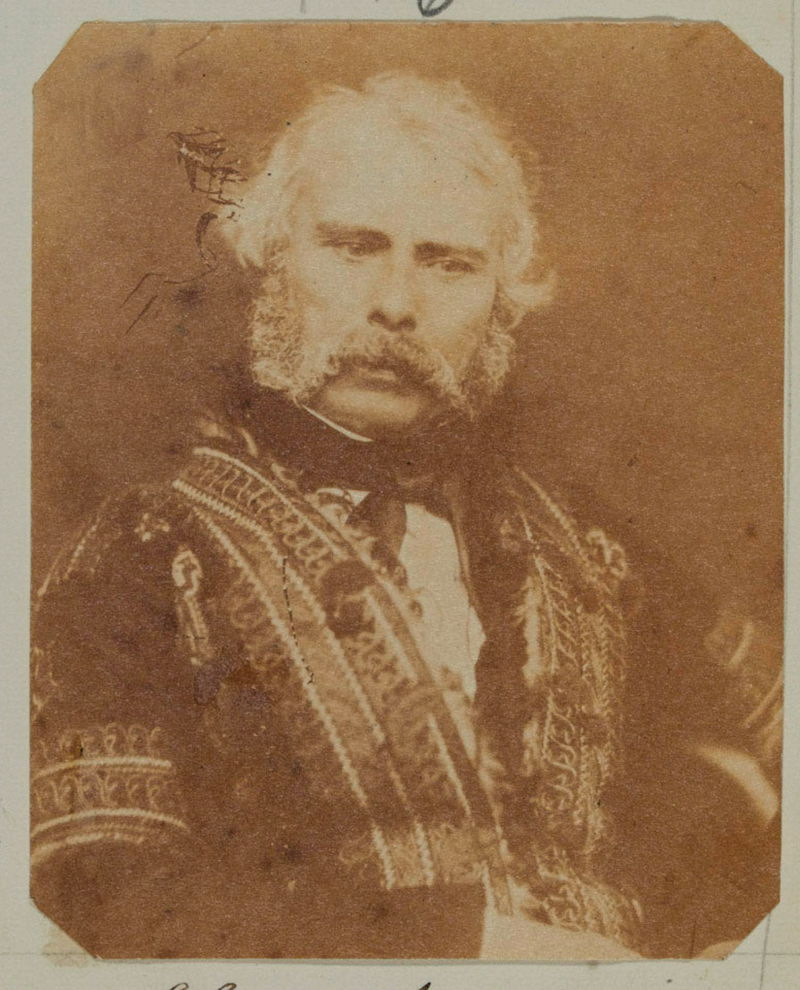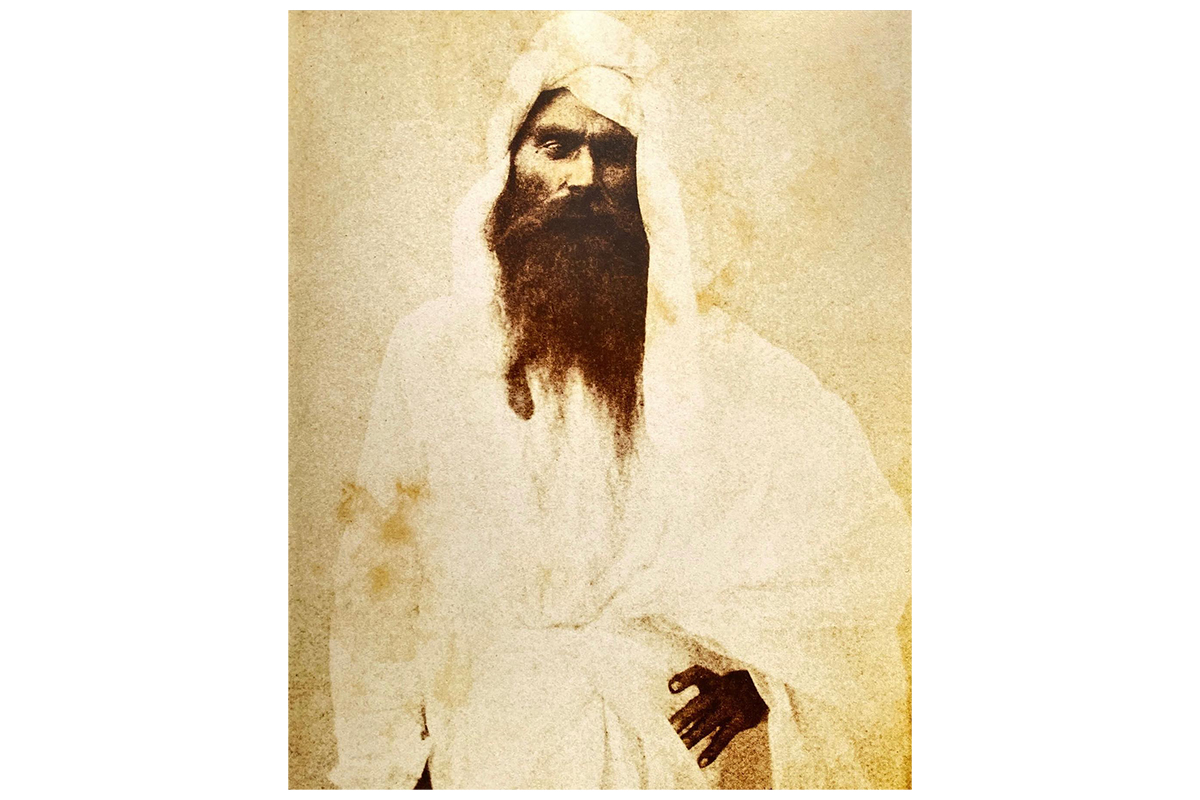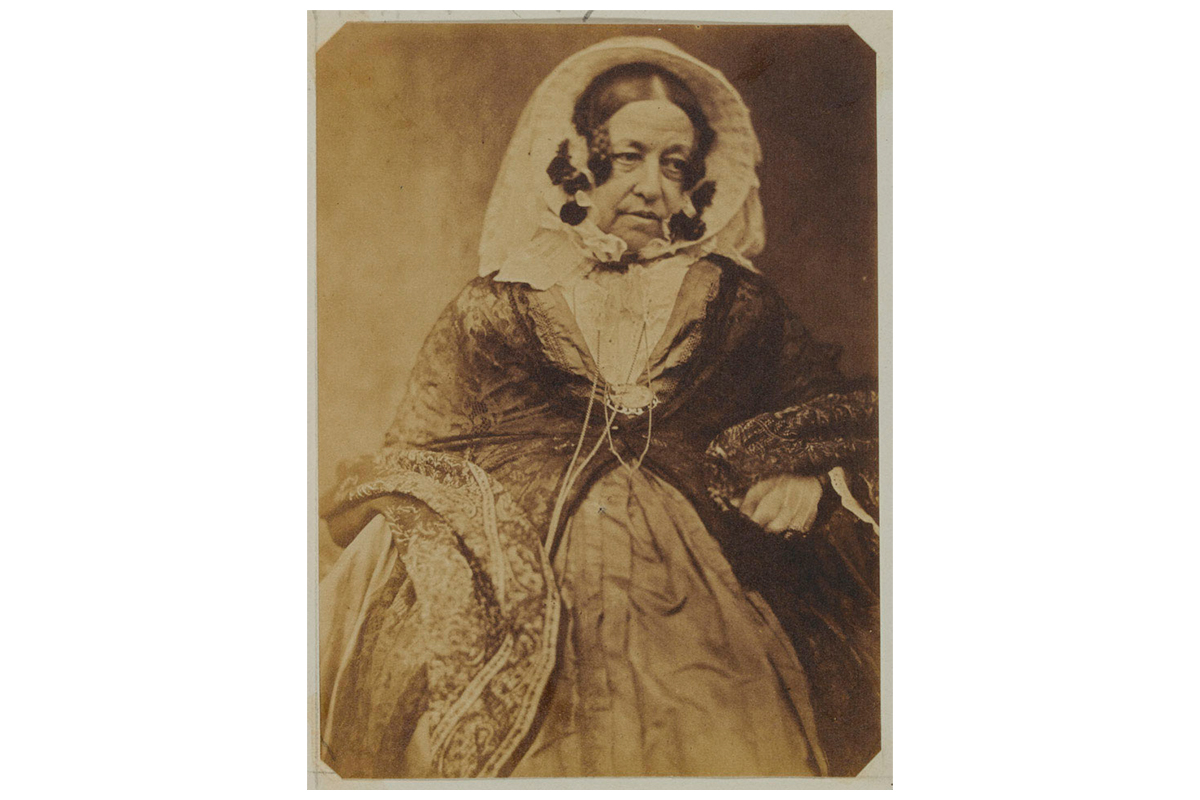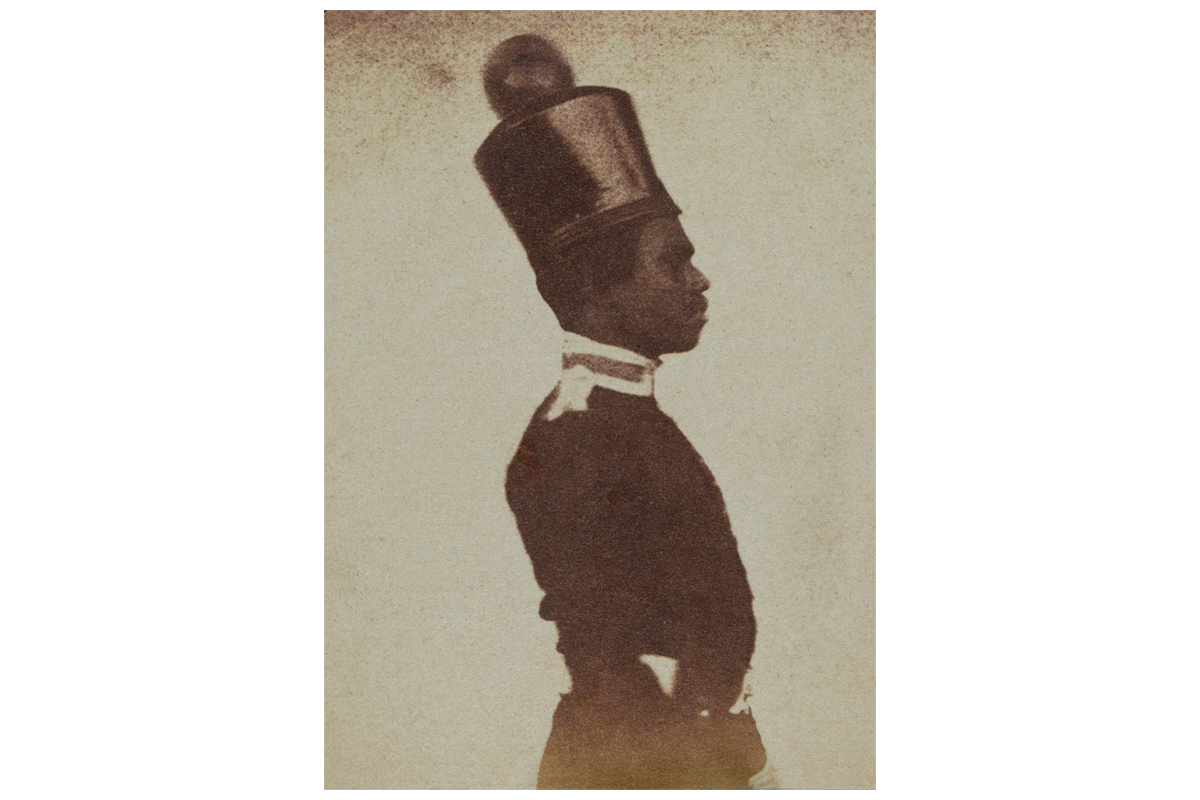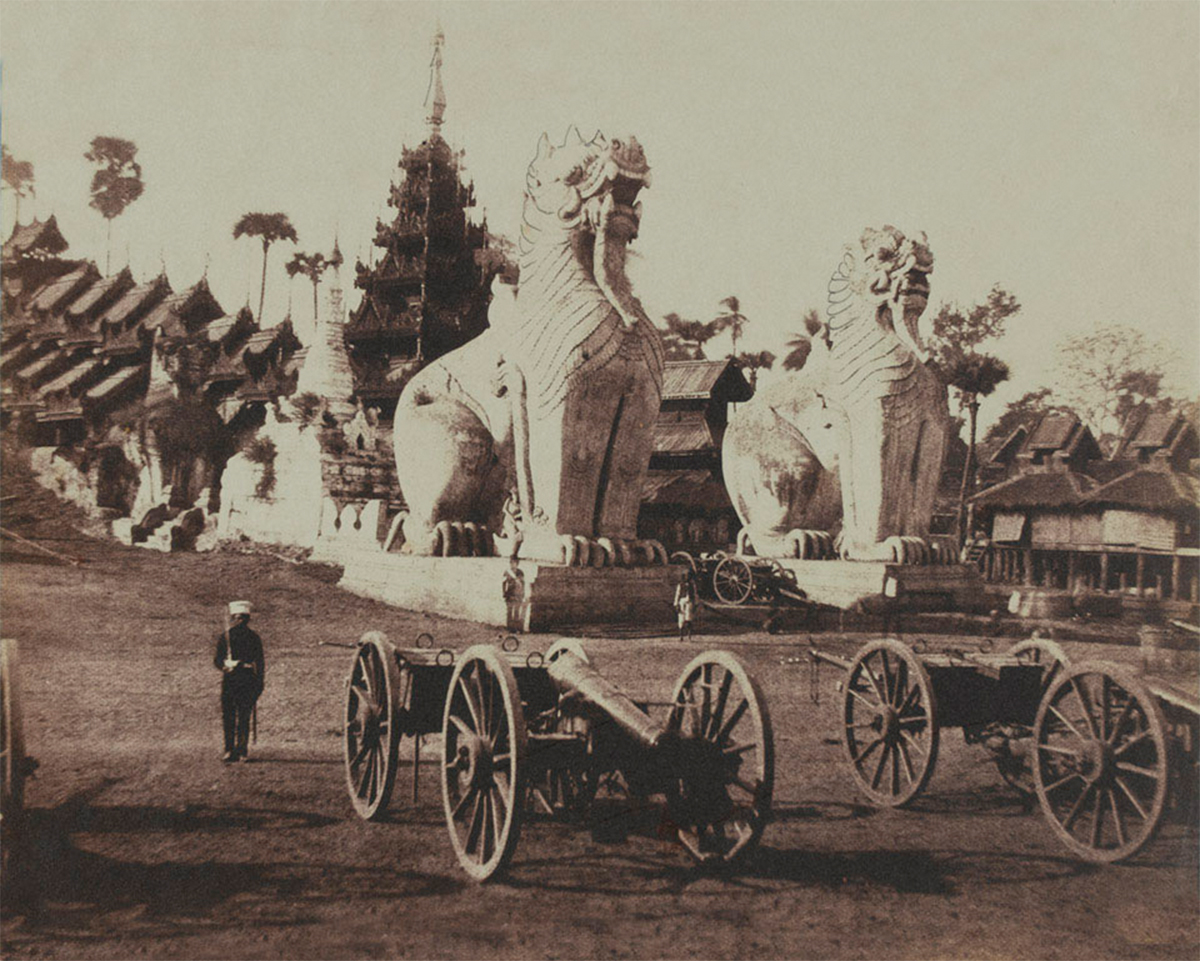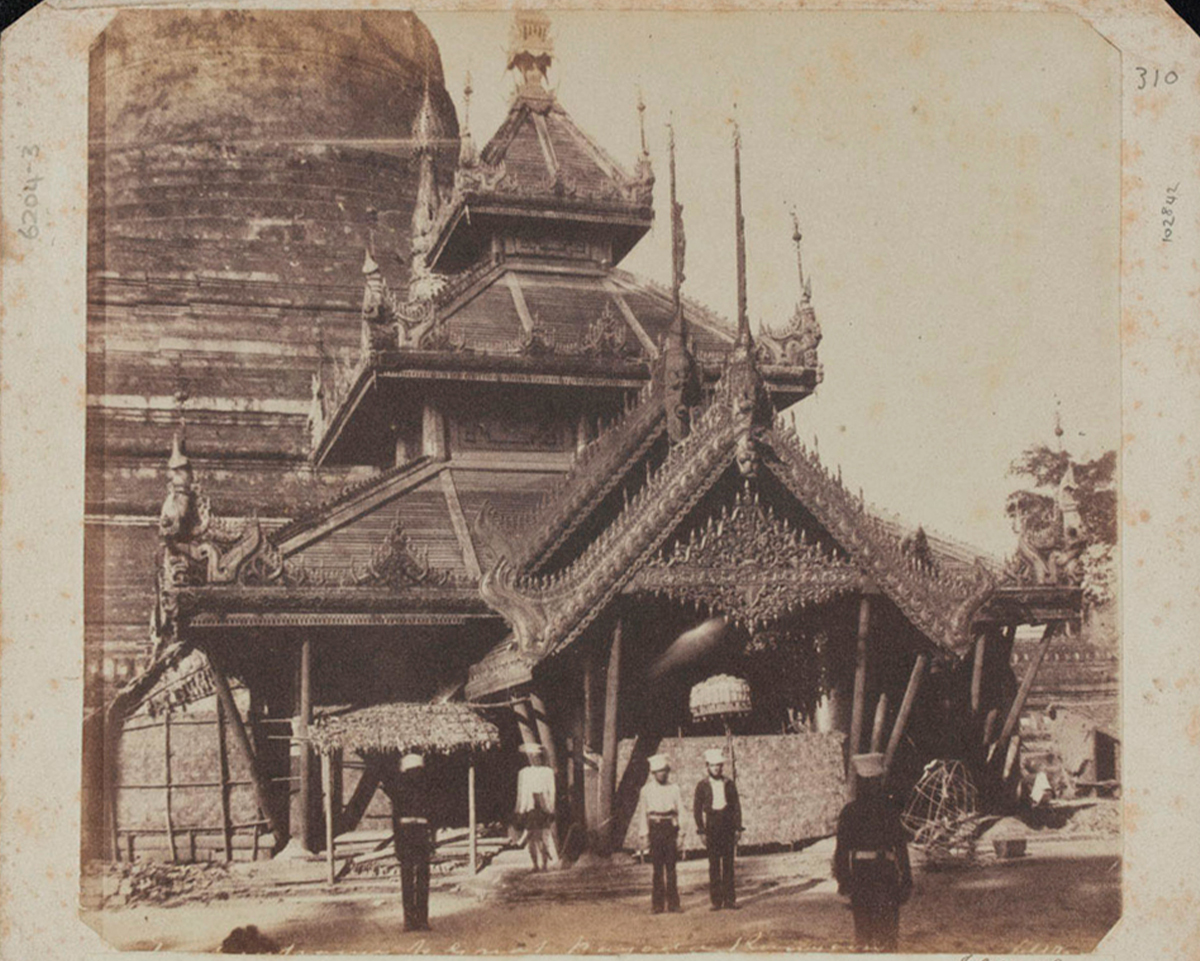ARTICLE
John McCosh
McCosh’s earliest photographs in South Asia can be dated to 1848, at the beginning of the Second Anglo-Sikh war, where he served as an army surgeon. During this period, he frequently photographed community leaders and rulers in India, such as Mul Raj, the Diwan of Multan, whom he photographed in captivity in 1849. He also photographed Vans Agnew, the would-be British agent for the puppet government of Multan after the First Anglo-Sikh war. Along with portraits, he also photographed landscape and architectural views during his travels across India and Burma.
McCosh frequently manipulated his photographs by cutting the negatives down and creating a border around the part that remained, allowing for a smaller but better composed version of the original image. The efficiency of the calotype method allowed McCosh to take several portraits a day, with his sitters in relaxed poses, distinct from the stiff scientific presentations of the native population in early ethnographic studies. However, in keeping with ethnographic tendencies of the time, he rarely included the names of the local subjects in his annotations and captions, instead using generic descriptions such as “Burmese Beauty” or “Madras Man.”
McCosh retired from military service in 1856 and returned to Britain, where he spent his remaining years chronicling his travels and publishing two volumes of poetry. His most frequently cited text, a handbook called Advice to Officers in India (1856), was published just before his departure from India. In the book, he recommends that new British army officers take up photography to get a better sense of India and its culture, further arguing that when travelling in India, a sturdy, if less mobile, camera would be a better option compared to folding portable cameras, which were too flimsy to withstand the harsh climates. Most of McCosh’s photographs were compiled in an album in 1859, which is currently housed at the National Army Museum in London, UK. Of the over three hundred photographs, thirty one are of architectural views, including temples in India and Burma, near the sites where he served.
McCosh passed away in London in 1885.
Bibliography
Our website is currently undergoing maintenance and re-design, due to which we have had to take down some of our bibliographies. While these will be re-published shortly, you can request references for specific articles by writing to hellomapacademy@map-india.org.




